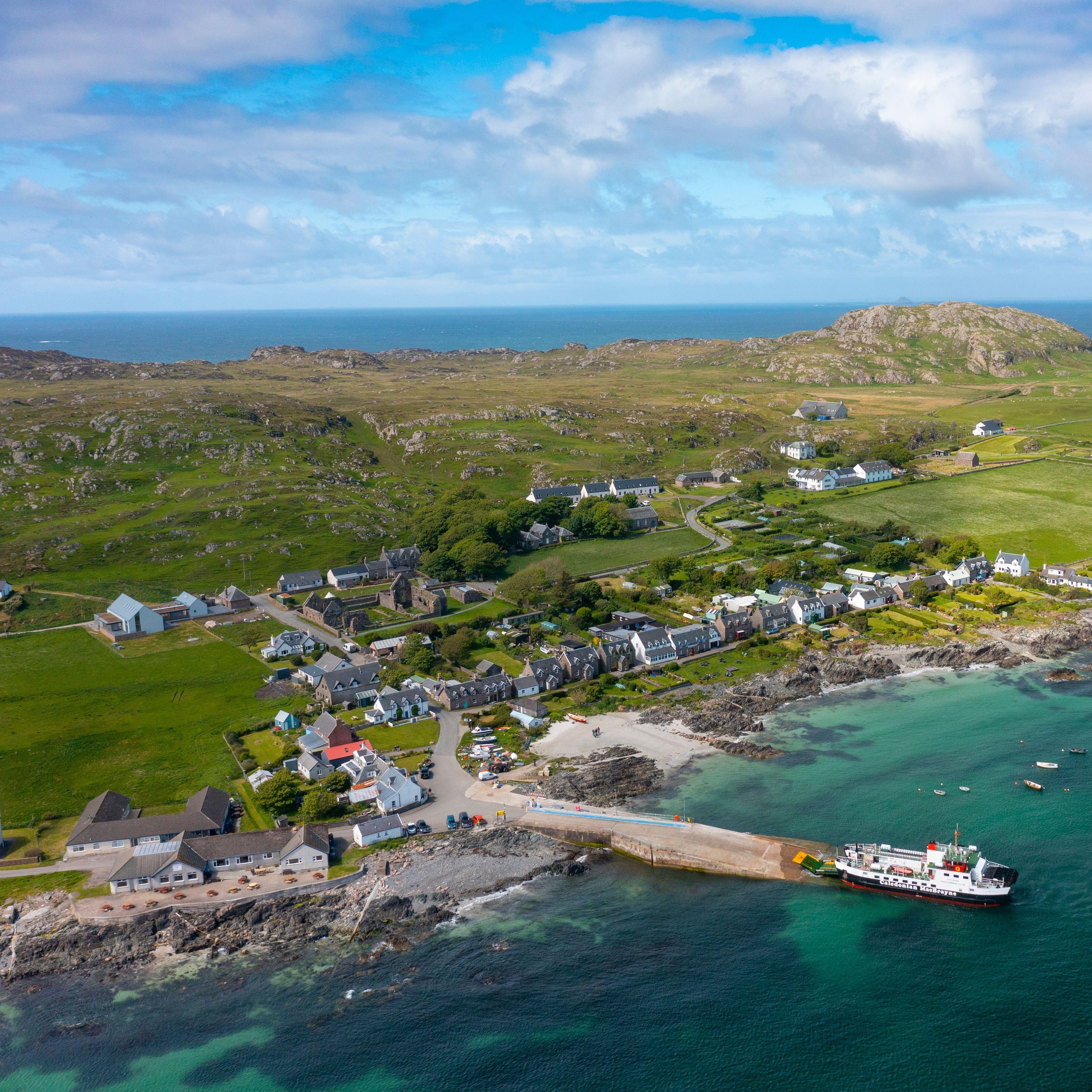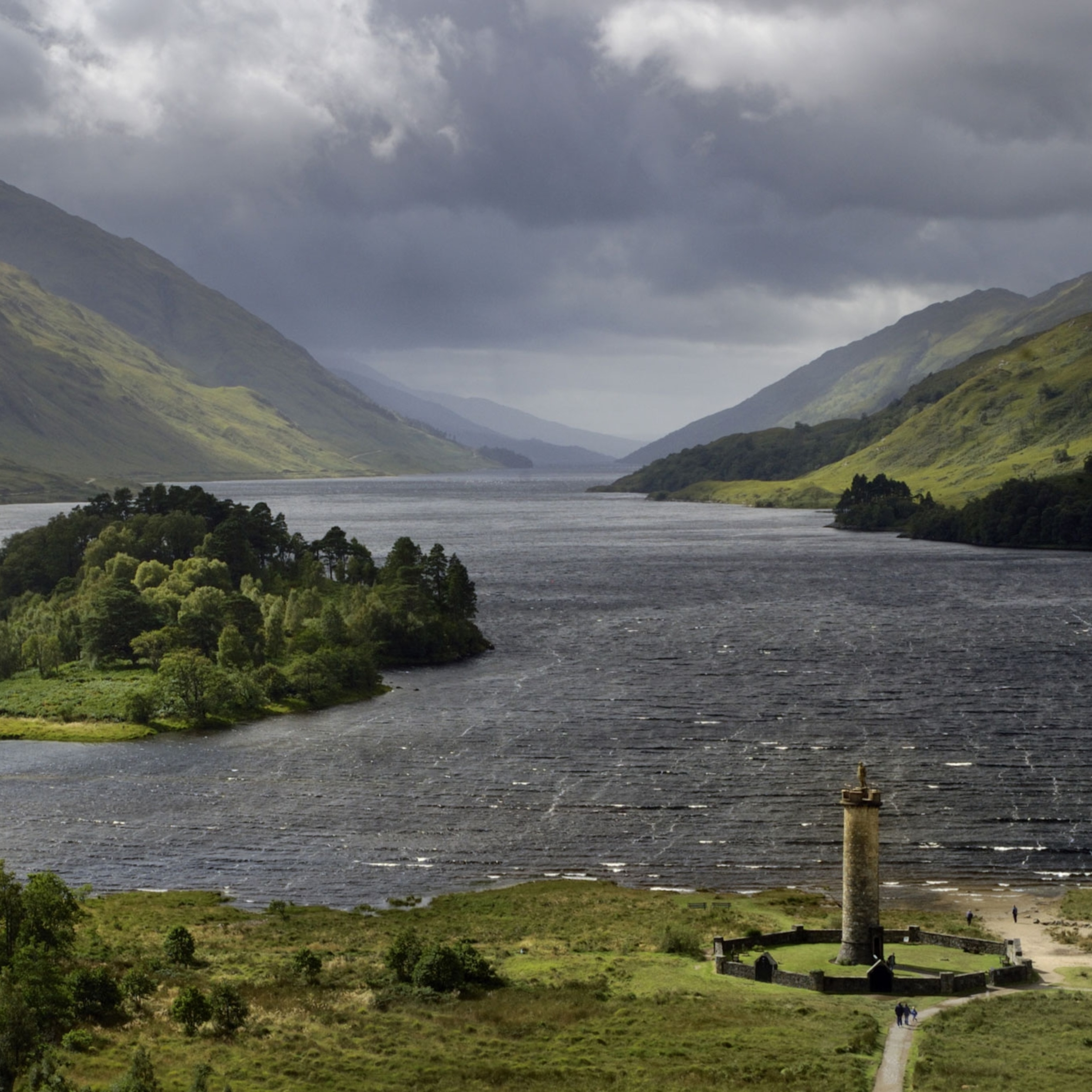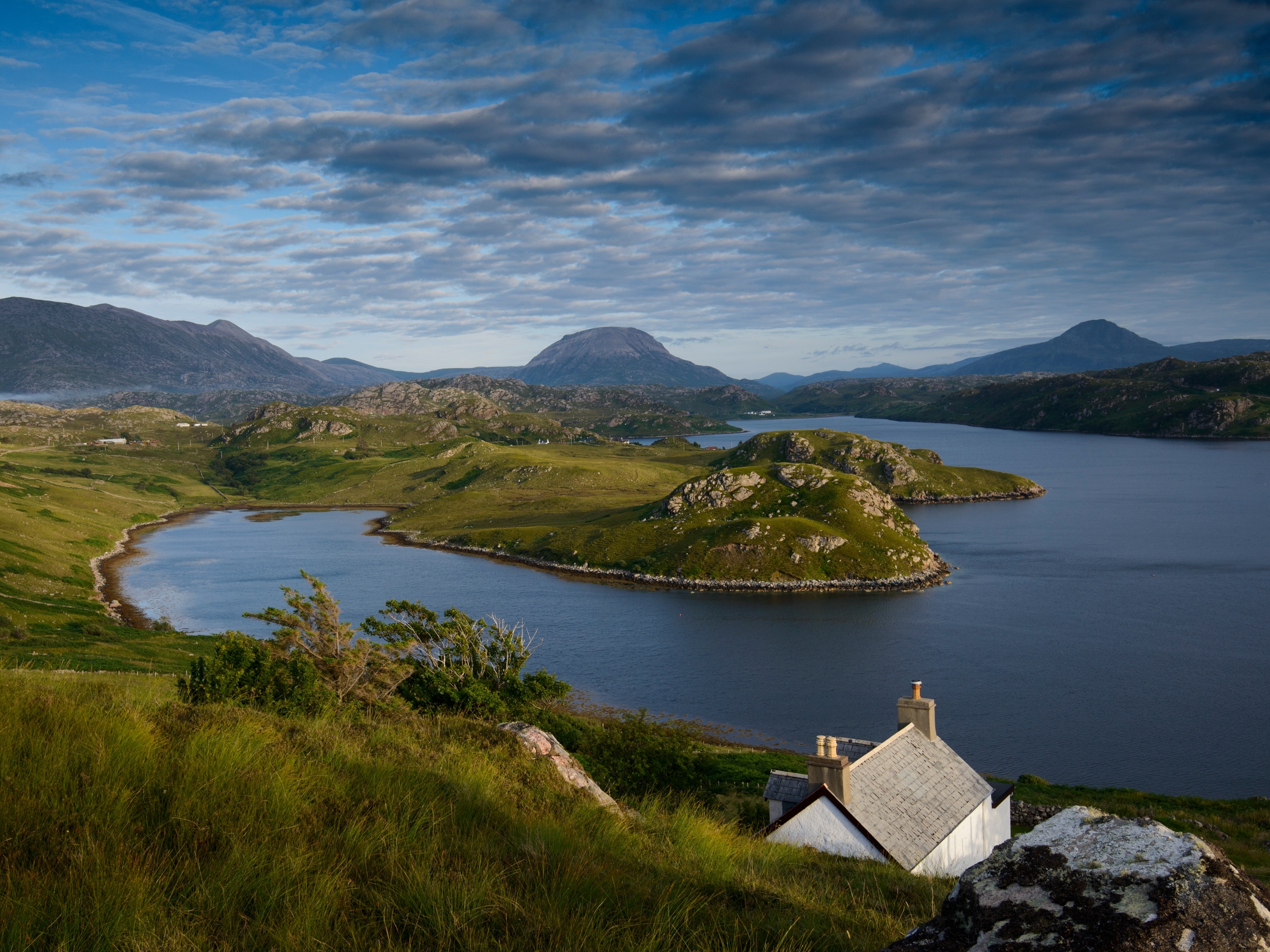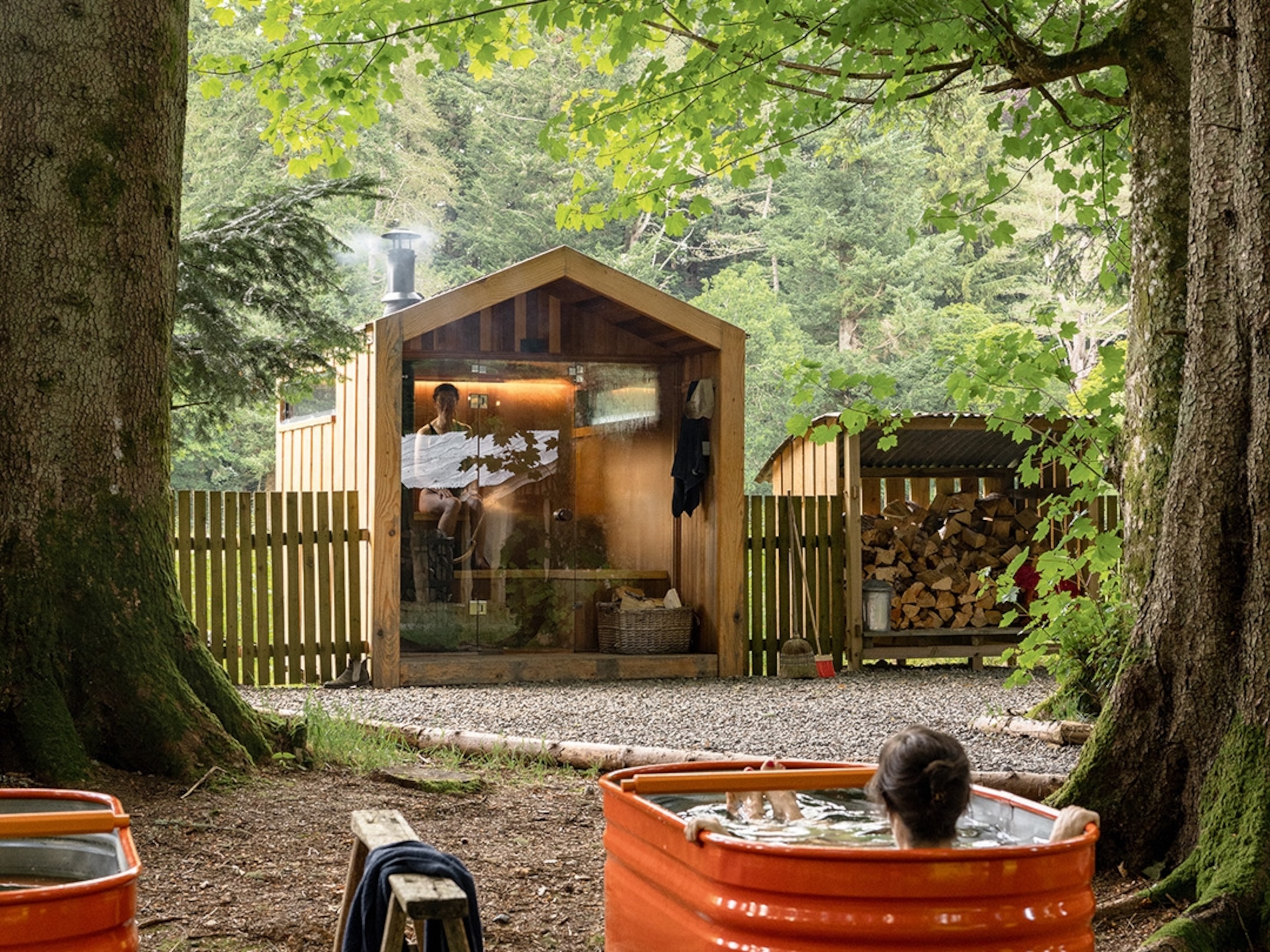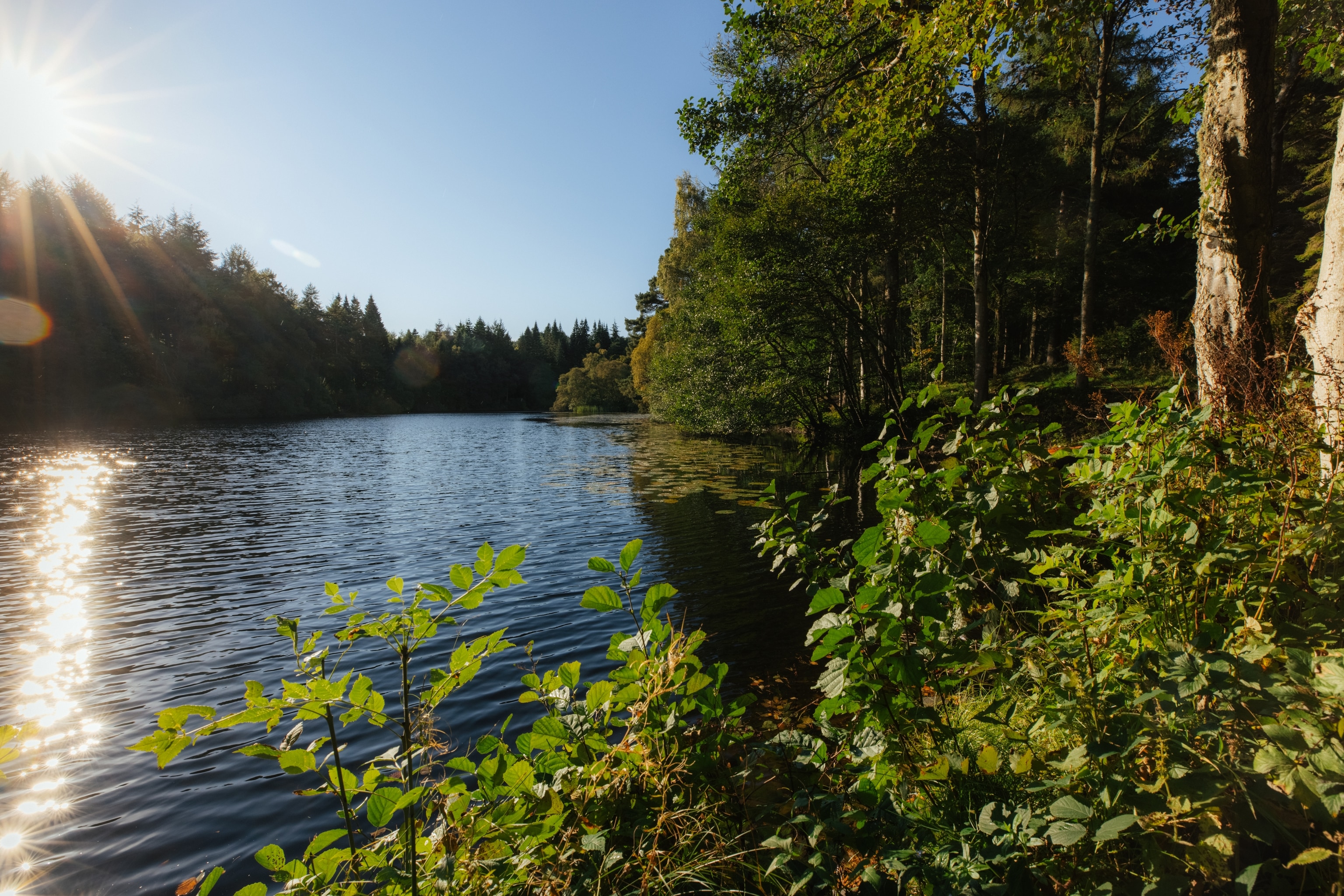
Slow up in the Scottish Borders’ living history
The unique combination of soothing terrain and welcoming people contrast dramatically with the Borders' captivating history, creating a destination of fascinating contradictions.
The Great Tapestry of Scotland is a community artwork made by 1,000 Scottish stitchers. Walking into the building–a modern design specifically tailored to house this magnificent project–you’ll find panels stretching in every direction. Although the tapestry is linear, visitors can wander throughout the circular room to explore the country’s history, from Dolly the sheep to the Battle of Carham. Topping in at 160 panels, viewers are meant to take it slow, appreciating the details while learning the brilliant and bloody history of the country.
It is fitting that the tapestry is housed in Galashiels, a small town in the heart of the Scottish Borders. The Borders have a delicate beauty, with England to the south and split through by the River Tweed. The gentle hills are ideal for cycling, and touring visitors can travel all the way to the coast, stopping at ancient abbeys and nature reserves along the route. The locals are happy to have a chat and carry a kindness so pure they’re excited to share recommendations embellished with history, cultural context, and more than likely their family’s connection within it all.
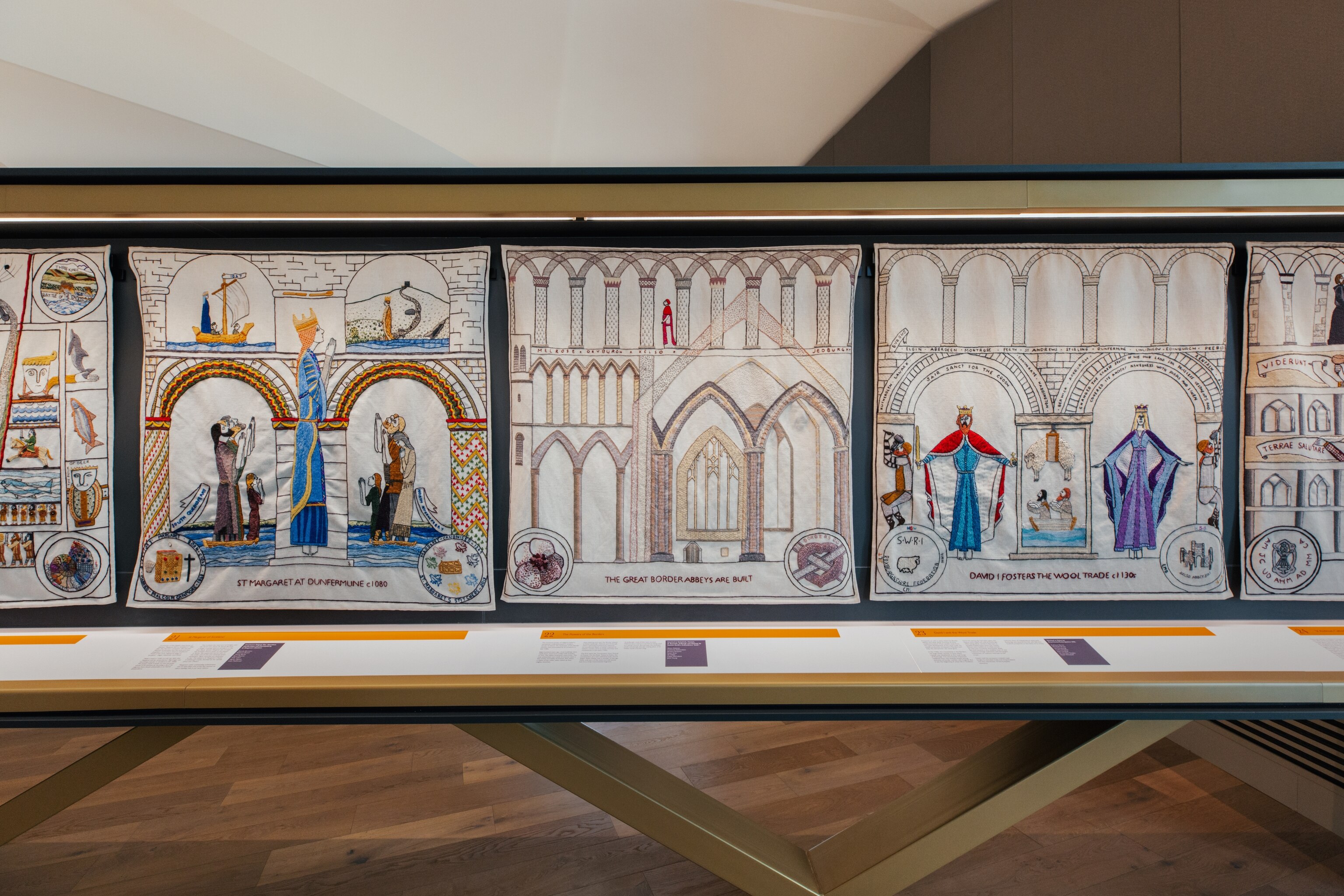
The topography of the Borders is sown with this living history. You can shake the hand of someone standing where their great, great, great, great grandparents also lived. One such place is Chesters Estate, operated by John and Ellie Henderson, who built a glamping retreat specifically designed to convince harried urban dwellers to put their screens away and connect face-to-face. As John describes, small acts of labor, like stoking a fire to cook dinner, remind travelers of the “good work.” Work that is humble and collaborative, bringing us closer together.
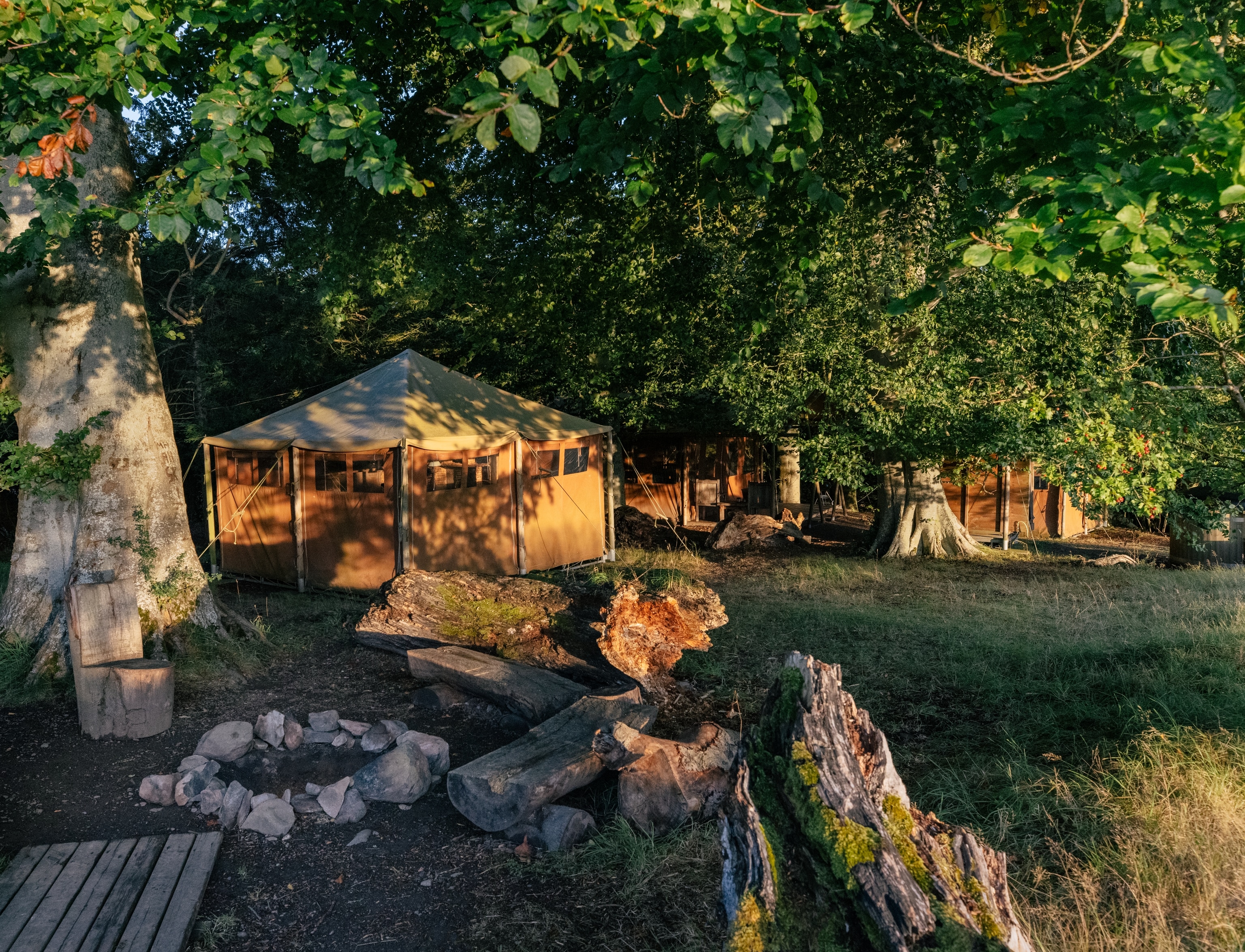
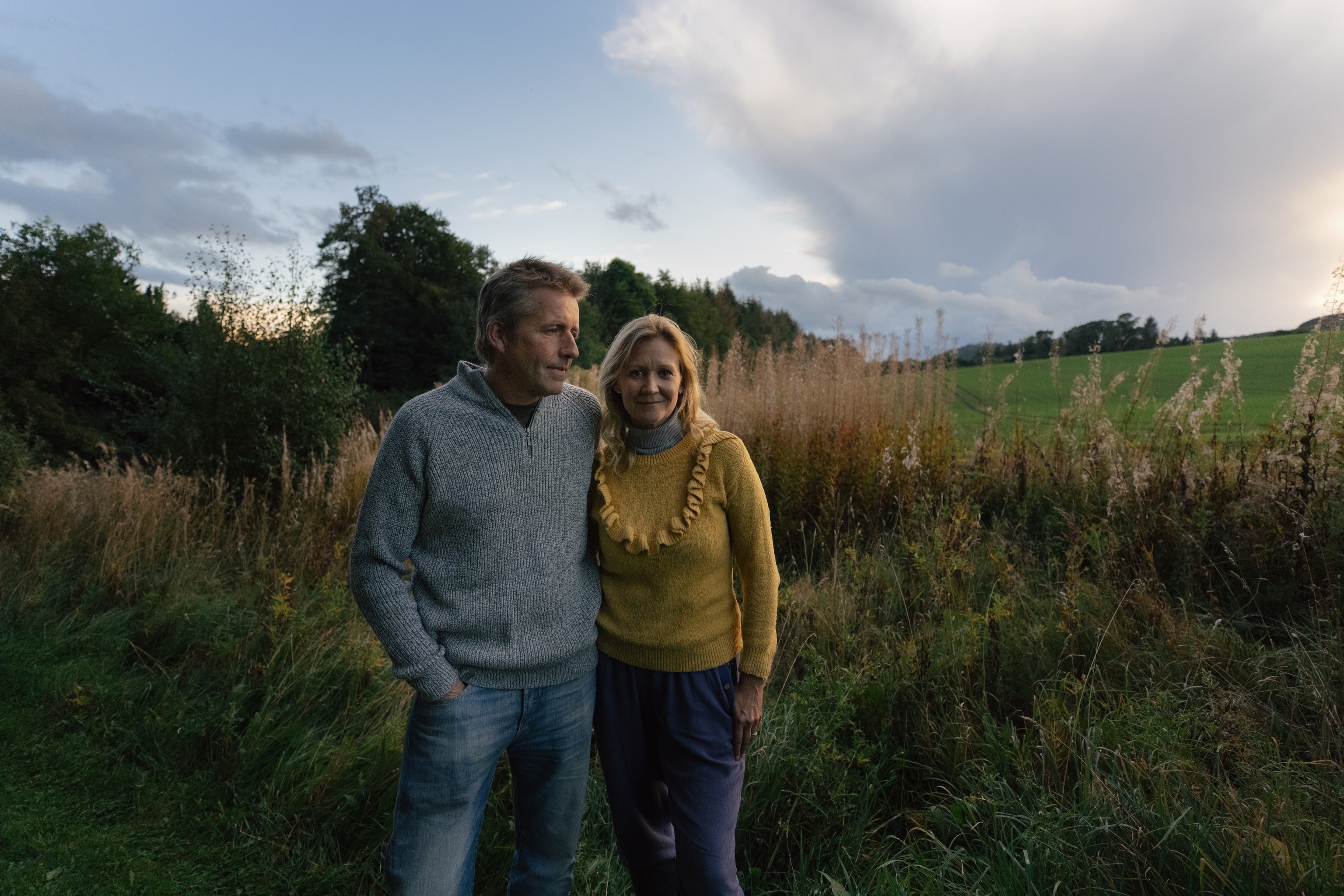
This philosophy of slowness has been mending people in the Borders for centuries. One of the most well-known advocates of this land was Sir Walter Scott, the author of the historical novel Ivanhoe, as well as a celebrated poet, playwright, and historian. Abbotsford, his historic country house, is a relic of intricate architecture and carefully planned landscaping. Scott moved to the Borders as a child after contracting polio. His family hoped that the sublime scenery would heal him from the disease. Amazingly, he recovered from the illness, and in building Abbotsford Scott wished to give back to the countryside that saved his life. While many landowners followed the trend of manicured gardens, Scott was an early pioneer of regenerative agriculture, planting trees and plants that would help the ecosystem thrive.
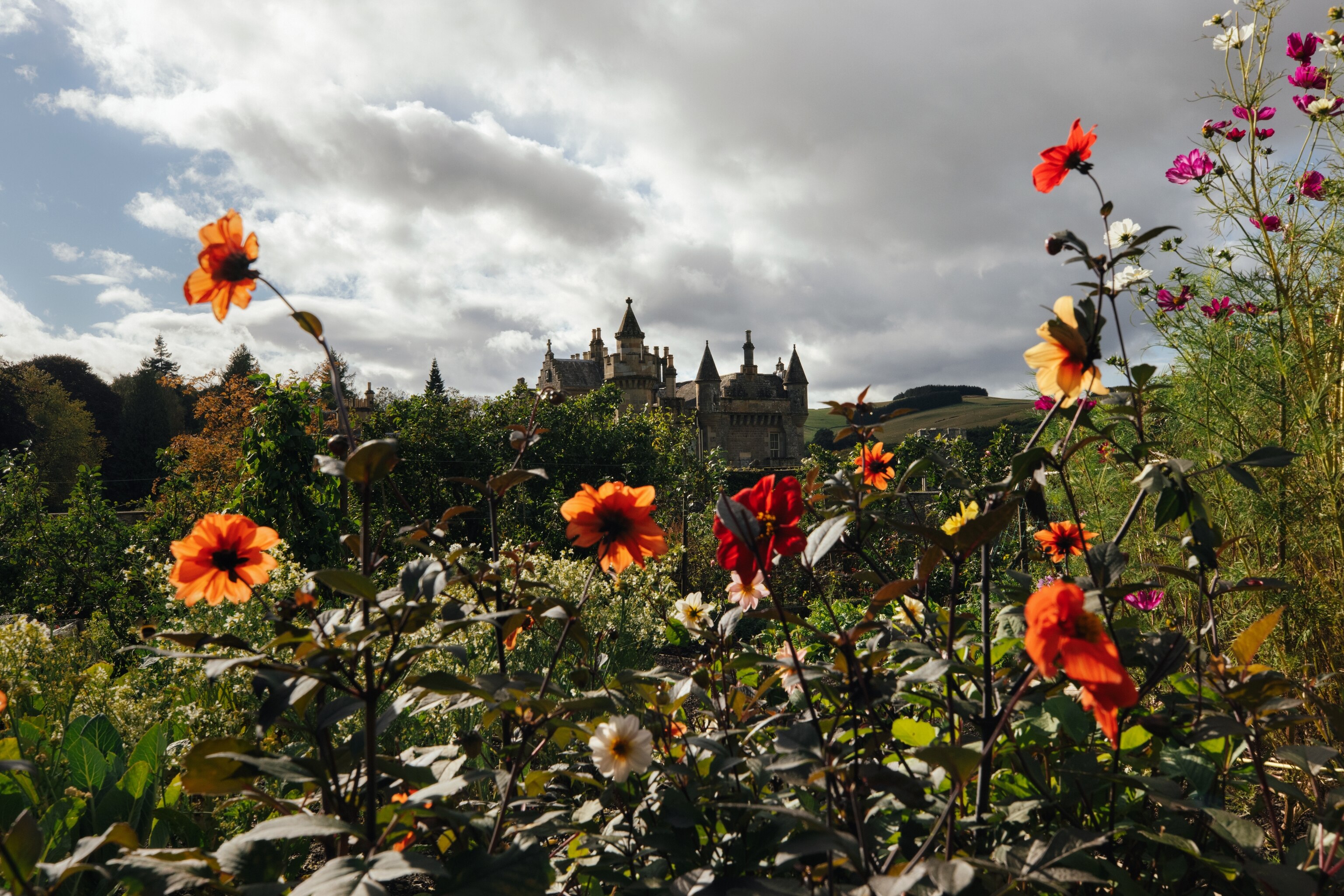
Centuries later, you can see the results of his and others’ partnership with nature. Dedicated paths for walkers and cyclists are abundant in the Borders. Some take you across suspension bridges, others by marvels like the Leaderfoot Viaduct. One that will take your breath away (literally and figuratively) is the climb up to Scott’s View, said to be a favorite of Sir Walter Scott. The endorphins should support your sense of wonder, gazing out on the Eildon Hills. Not far away at Bowhill Estate, hiking up to the saddle of the moor, you’ll find a viewpoint that shows the contrasting environments of the Borders. To one side, farmland mixed with small towns and forest patterns. The opposite view more wild, with dark heather and hidden lochs blending into the slopes. Back at Bowhill House and Grounds, tourists can amble on hiking paths through the gardens or arrange tours to see the sprawling interior. The pathways around the house meander, working their way around instead of in a straight line as if to say “you will take your time to enjoy it”.
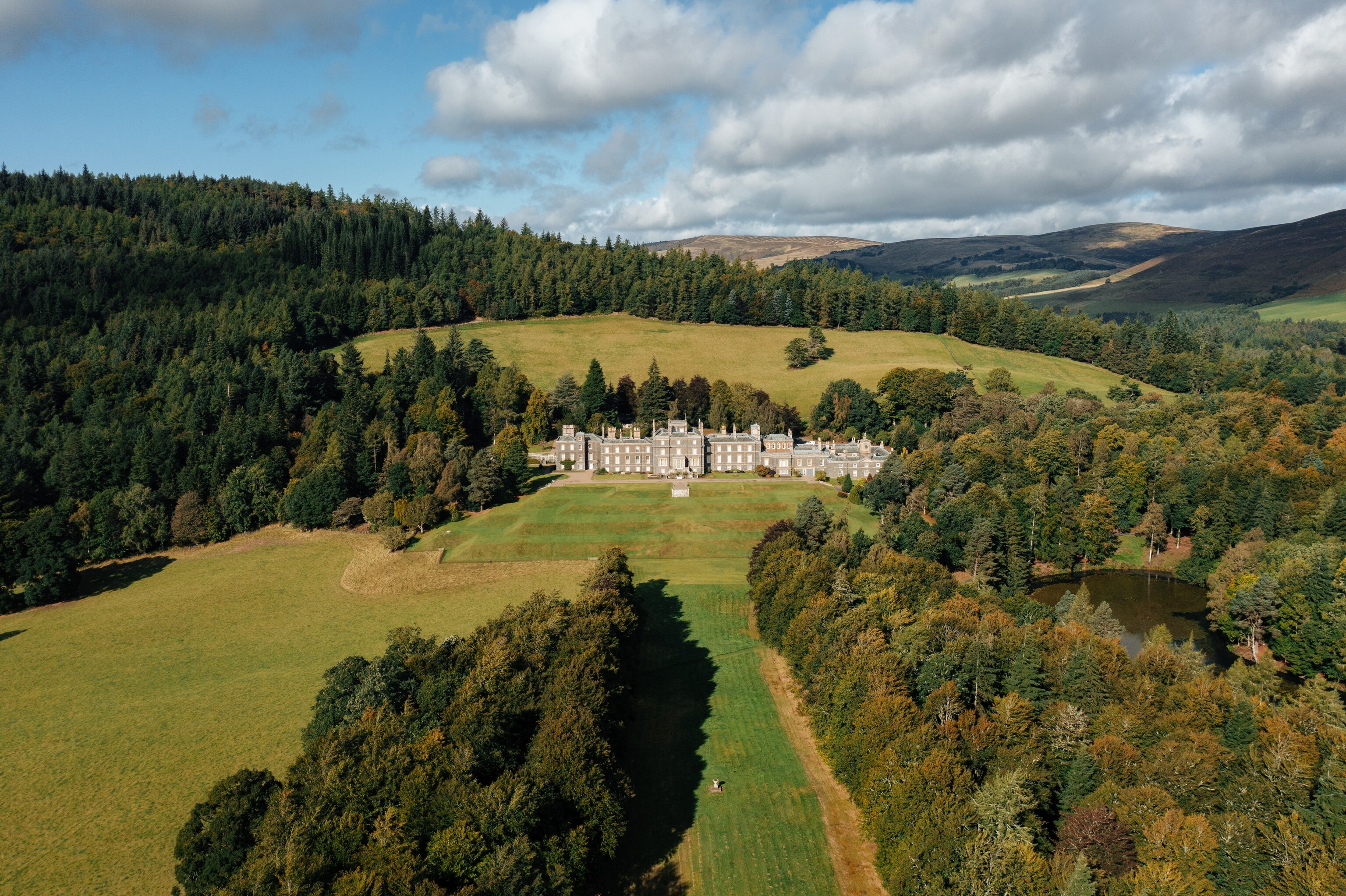
In contrast, the Four Abbeys Cycling Route connects Kelso, Melrose, Jedburgh, and Dryburgh abbeys in a showcase of ruins that encourages your imagination to bring the scene to life. Similarly, Smailholm, a Scottish peel tower, can be seen for miles in all directions. The stone structure is much simpler than a site like Melrose Abbey, but it commands your attention like a sentinel, stationed in place since the 15th century. The manmade structures in the Borders range from fully preserved to skeletal, each with its own unique elegance.
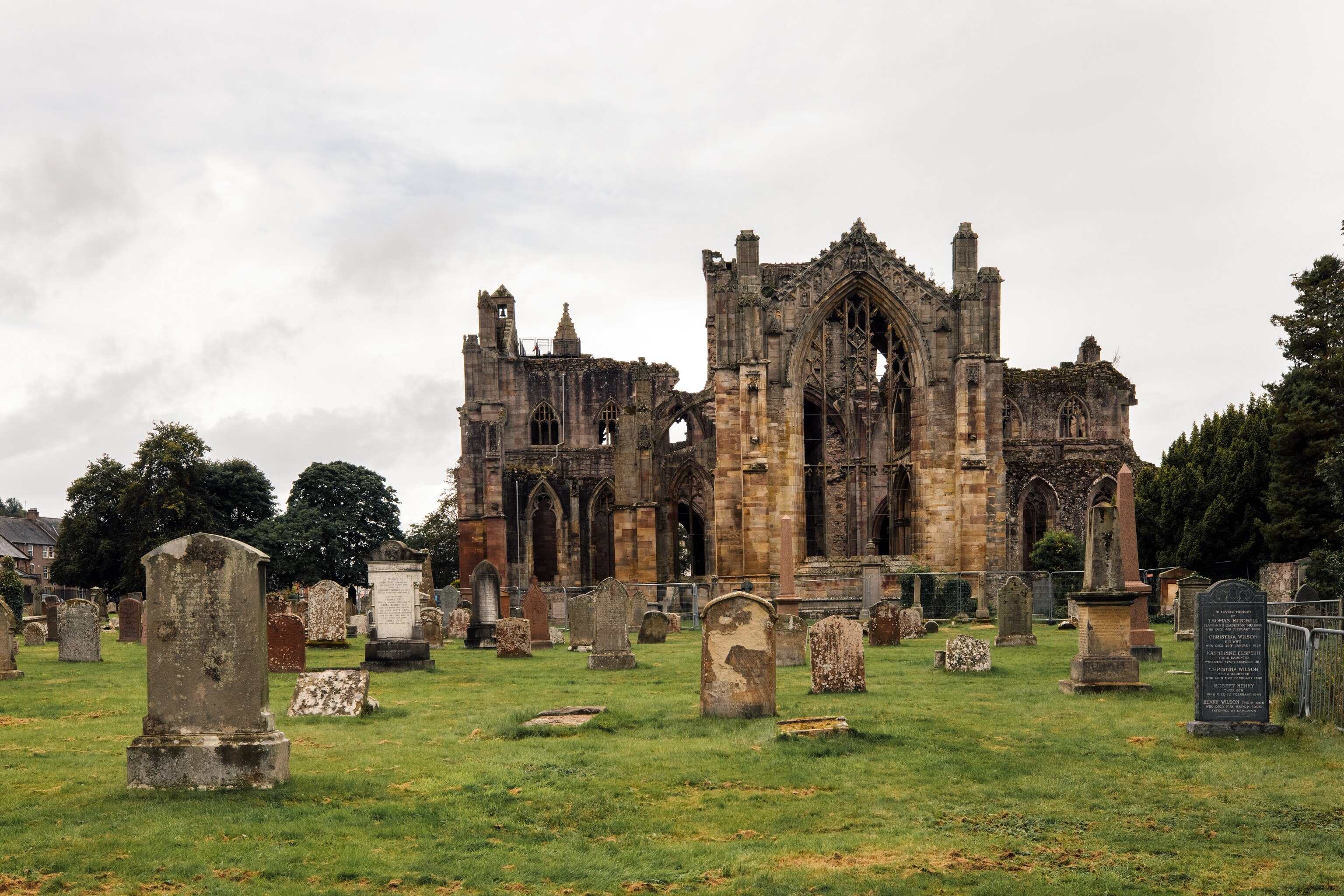
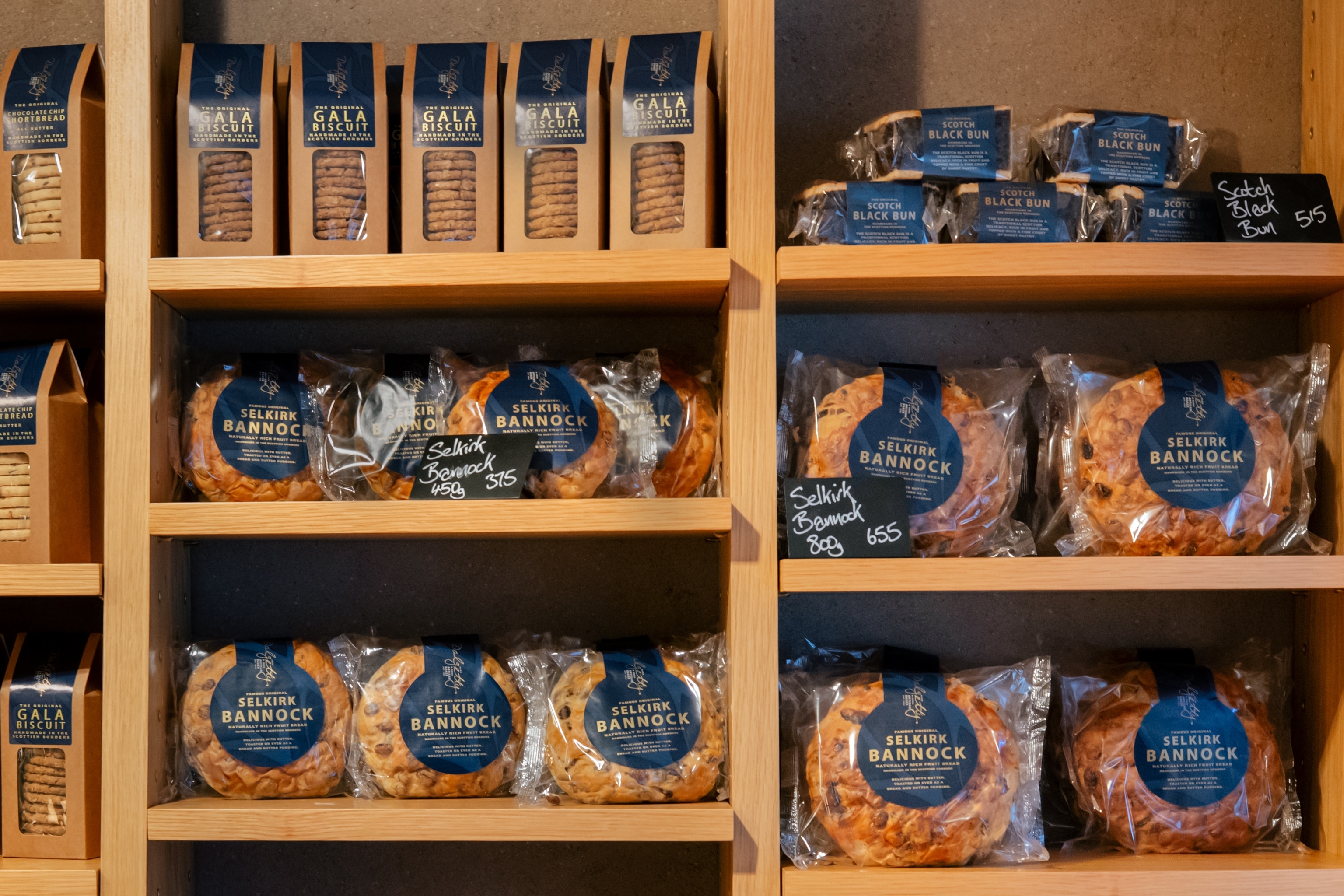
Cycling and other forms of slow travel are favored in the Borders, where owners of pastry shops and bakeries regale the origin stories of local favorites, rather than rushing on to the next customer. At Alex Dalgetty & Sons, golden light pours onto an otherwise dark street, lined with early morning patrons. They will soon be inside to purchase freshly made scones, tarts, and the ‘Famous Original Selkirk Bannock.’ The Selkirk Bannock is a hefty pastry, filled to the brim with sultanas (known as golden raisins in the States). It is believed to have been originally made as an accident, using leftover dough. Today, you can buy it as solid snack fuel for a full day of adventuring.
A natural place to end a journey in the Borders is at the St. Abb’s Head National Nature Reserve, where the landscape crumbles into the North Sea. The borders here are not just formal, but also geographic. The craggy coast looks this way due to volcanic activity from the collision of tectonic plates near where Scotland and England sit. Ciaran Hatsell, a ranger in the reserve, explains how seabirds, seals, and whales find respite in the natural features. “We have about 50,000 visitors per year, and at least 50,000 seabirds. One bird for every traveler.”
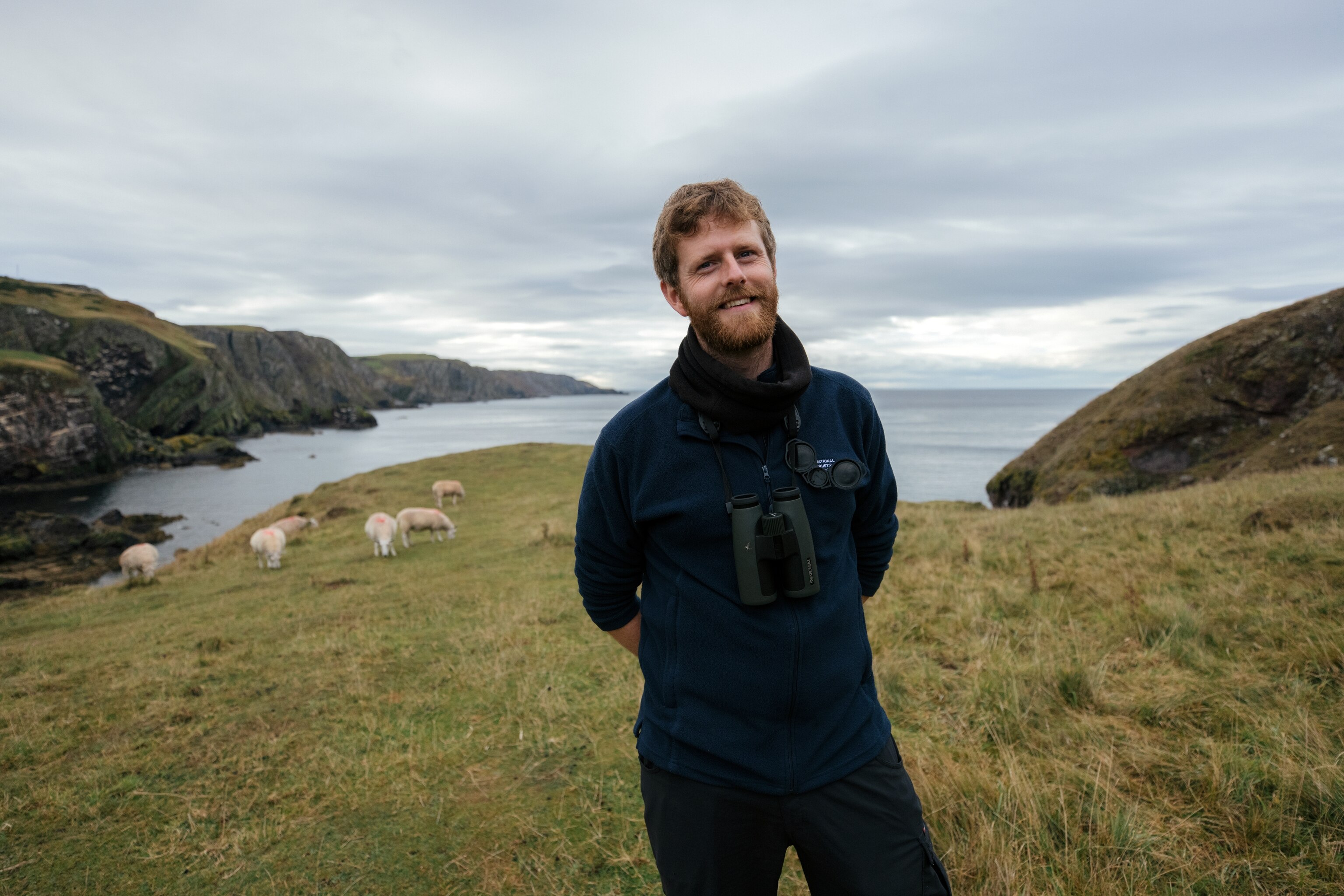
Living on the border, a coastline, so close to the edge where Scotland is no more, sweetens the pride of those who live there. There is pride in the outdoors, where the crisp air will have you dreaming of a hot tea by nightfall. And there is pride in the cozy indoors, often designed like a warm hug. The Scottish Borders have a beauty all their own, more untouched. There are days when the swirling clouds look like someone laid a thick wool blanket over the land. The region feeds your imagination by not giving it all away, with weather that hides the countryside for a moment, or the skeleton of an abbey that leaves you to create a story for yourself. If you want the real story, it’s as simple as asking. The people here are so connected to history they’ll happily spin you a narrative, but you’ll have to slow up to really listen.
Click here for more information on visiting the Scottish Borders. Top tip: Consider taking in the wonderful scenery from the Borders Railway from Edinburgh. For more slow travel inspiration visit our website.
